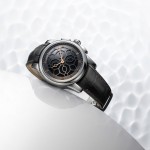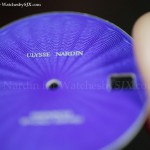Review: Ulysse Nardin Blast Hourstriker
An ingenious acoustic invention.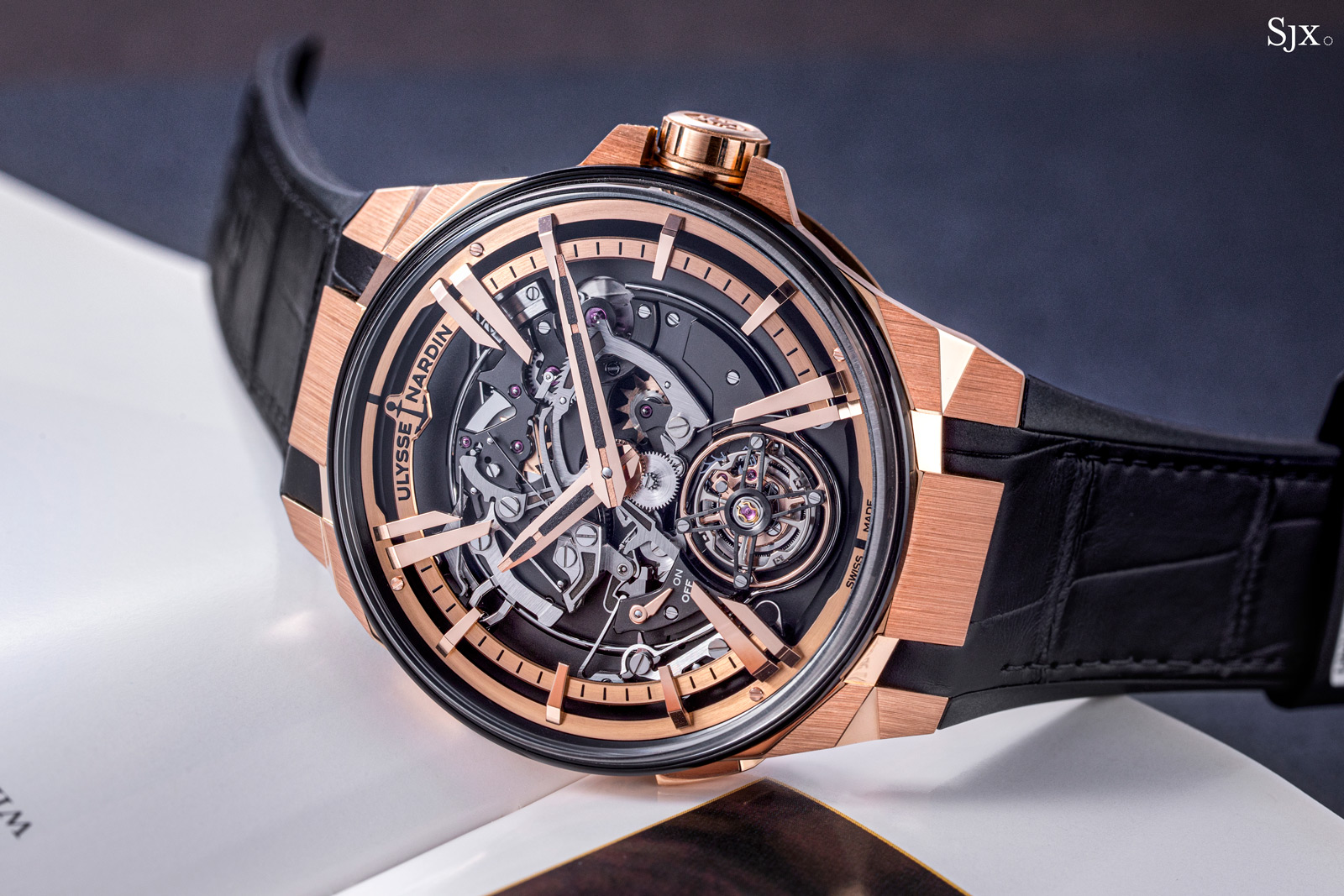
One of Ulysse Nardin’s more obscure models, the Blast Hourstriker is one of the brand’s most interesting watches from a technical perspective. It’s equipped with an in-house, self-winding tourbillon movement plus a hour-striking mechanism on top.
And concealed on the back is an amplification system developed with the help of Devialet, the French maker of high-end speakers that was coincidentally founded by a member of the Nardin family that once controlled the eponymous brand.
Initial thoughts
The Ulysse Nardin (UN) Hourstriker caught my attention in 2019 when the brand debuted the Hourstriker Phantom, the first model featuring the Devialet amplification system.
Comprised of both a novel gong fixture and soundboard, the Devialet system arguably ranks alongside the inventions in the Patek Philippe “Advanced Research” Minute Repeater ref. 5750P and Audemars Piguet Supersonnerie as one of the most notable striking innovations on the market today. And the backstory of the Devialet system is surprisingly appropriate: one of Devialet’s co-founders is Emmanuel Nardin, an industrial designer who’s a descendant of Ulysse.
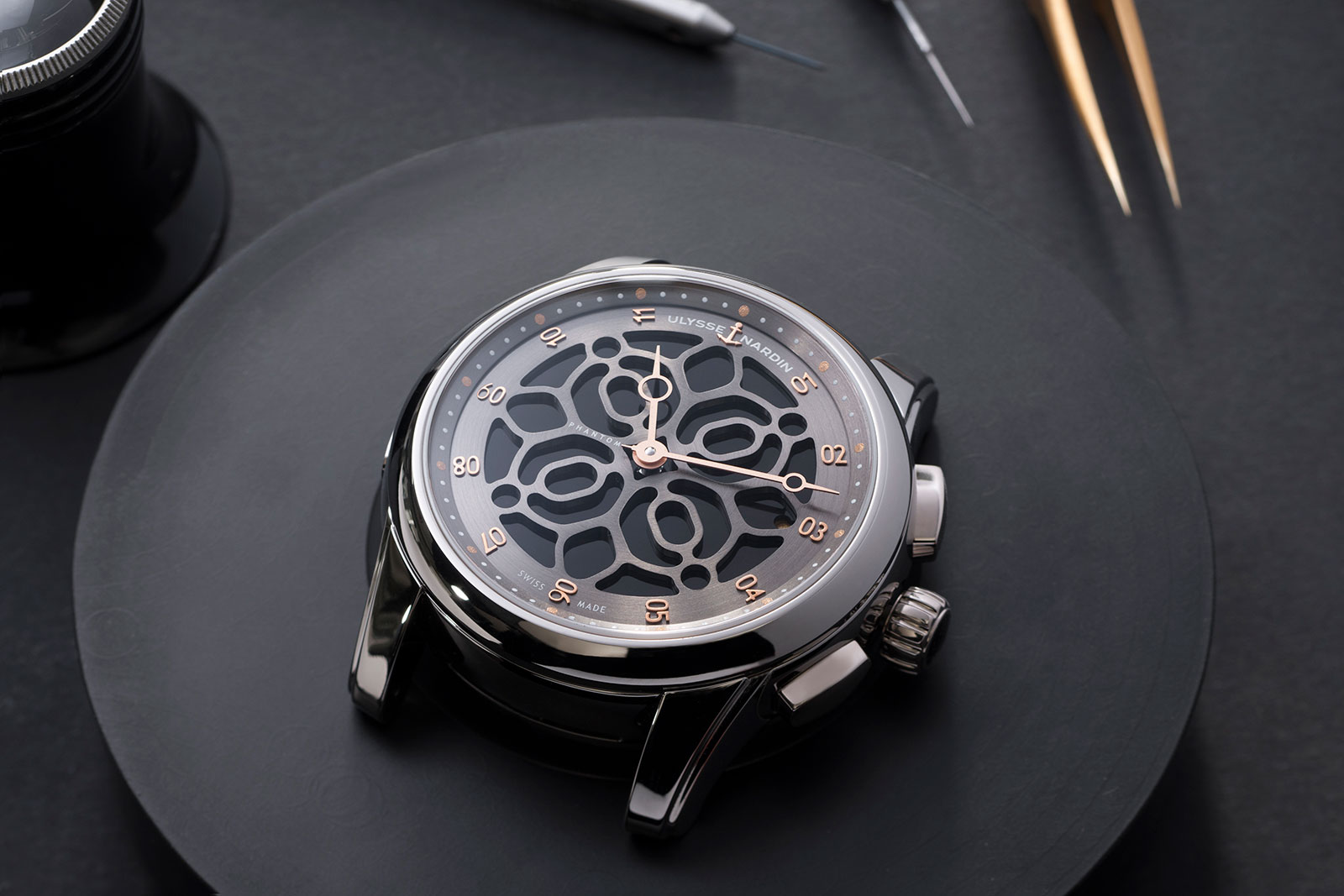
The Hourstriker Phantom. Image – Ulysse Nardin
The Hourstriker Phantom was short-lived and quickly replaced by the Blast Hourstriker. Even though the Blast Hourstriker is a substantially upgraded watch, most enthusiasts are probably unaware of it, probably because it resembles less complicated models in UN’s catalogue.
In the Blast Hourstriker, the ETA base of the Phantom is replaced by UN’s own automatic movement with a tourbillon. An open dial reveals all of the strikework, while the back incorporates the soundboard of the Devialet system.
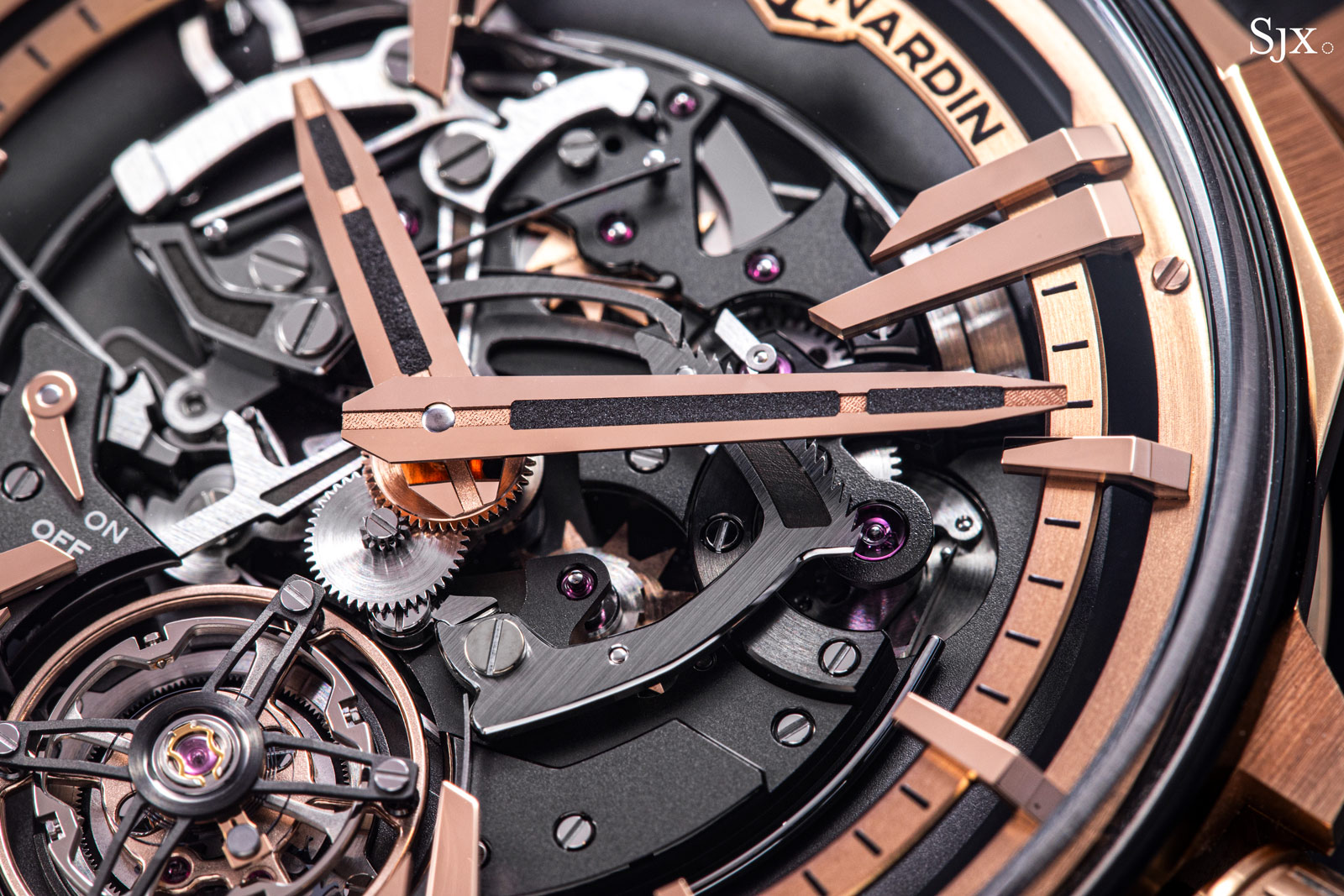
Importantly, the Devialet system works. The chimes are impressively loud and resonant, even in the oversized and hefty Blast case. And watching the strikework in motion as the chiming unfolds is satisfying.
While the watch is undeniably impressive technically, the hyper-modern design isn’t for everyone, especially with the 45 mm case. I like the open dial, which is ideal for such a complication, but I prefer the classical case of the Phantom that was also more wearable at 43 mm.
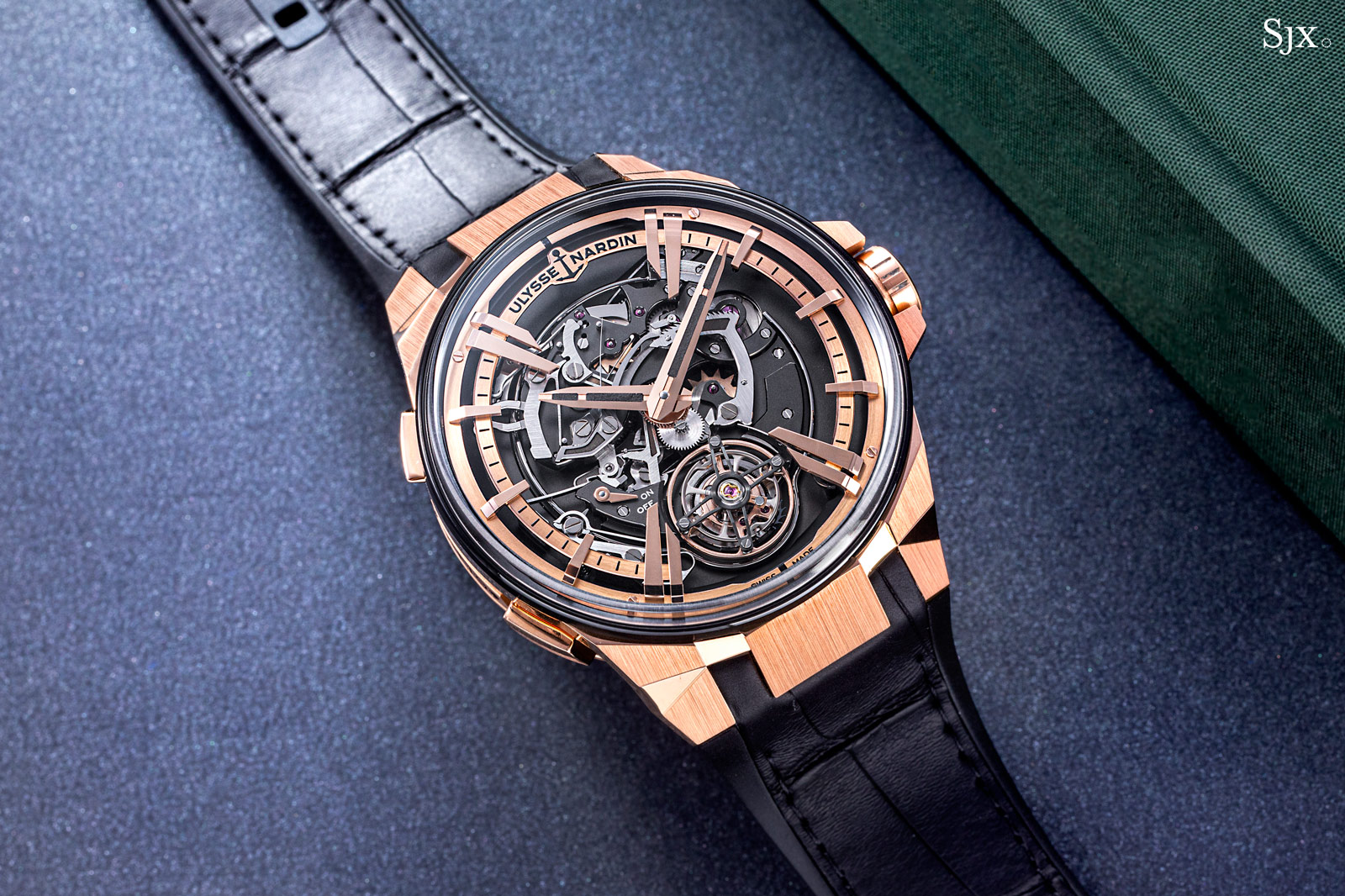
Time as it passes
The Blast Hourstriker is a type of sonnerie, a watch that chimes the time en passant, as it passes. Functionally, it’s something of a cross between a minute repeater and grand sonnerie, simpler than either but able to both chime the time on demand and automatically as it goes by.
Like traditional sonnerie watches, the Hourstriker has a separate mainspring and gear train for the chiming mechanism. As a result, the Blast is a full-fledged hourstriker that chimes the hours at the top of each hour, as well as a single chime every 30 minutes past the hour, unlike simpler hourstrikers that chime a single note every time. So it will strike 11 notes at 11:00, and a single note at 11:30. The sonnerie function can be turned on or off via the pusher at eight, while the chiming sequence can be activated manually with the pusher at ten.
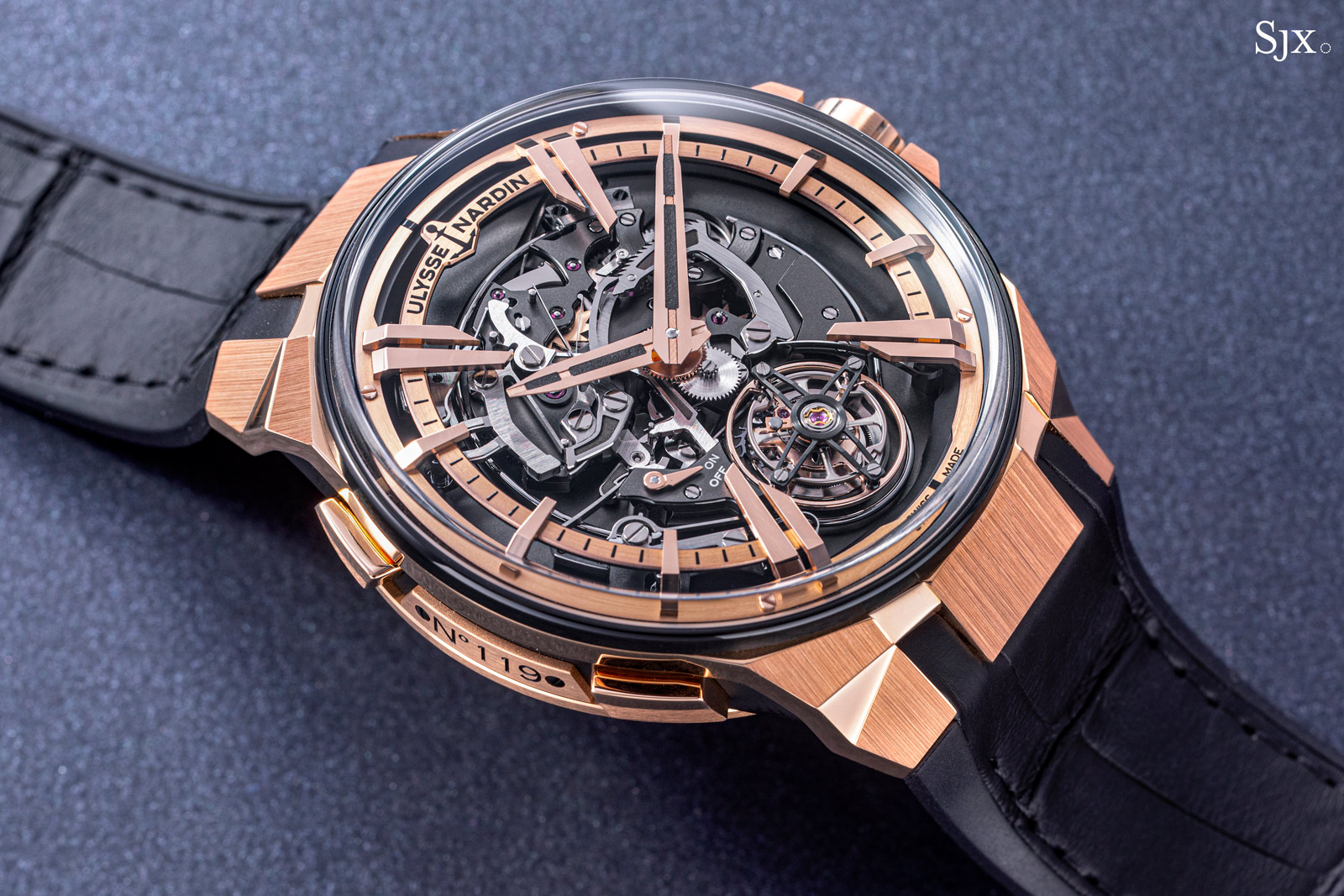
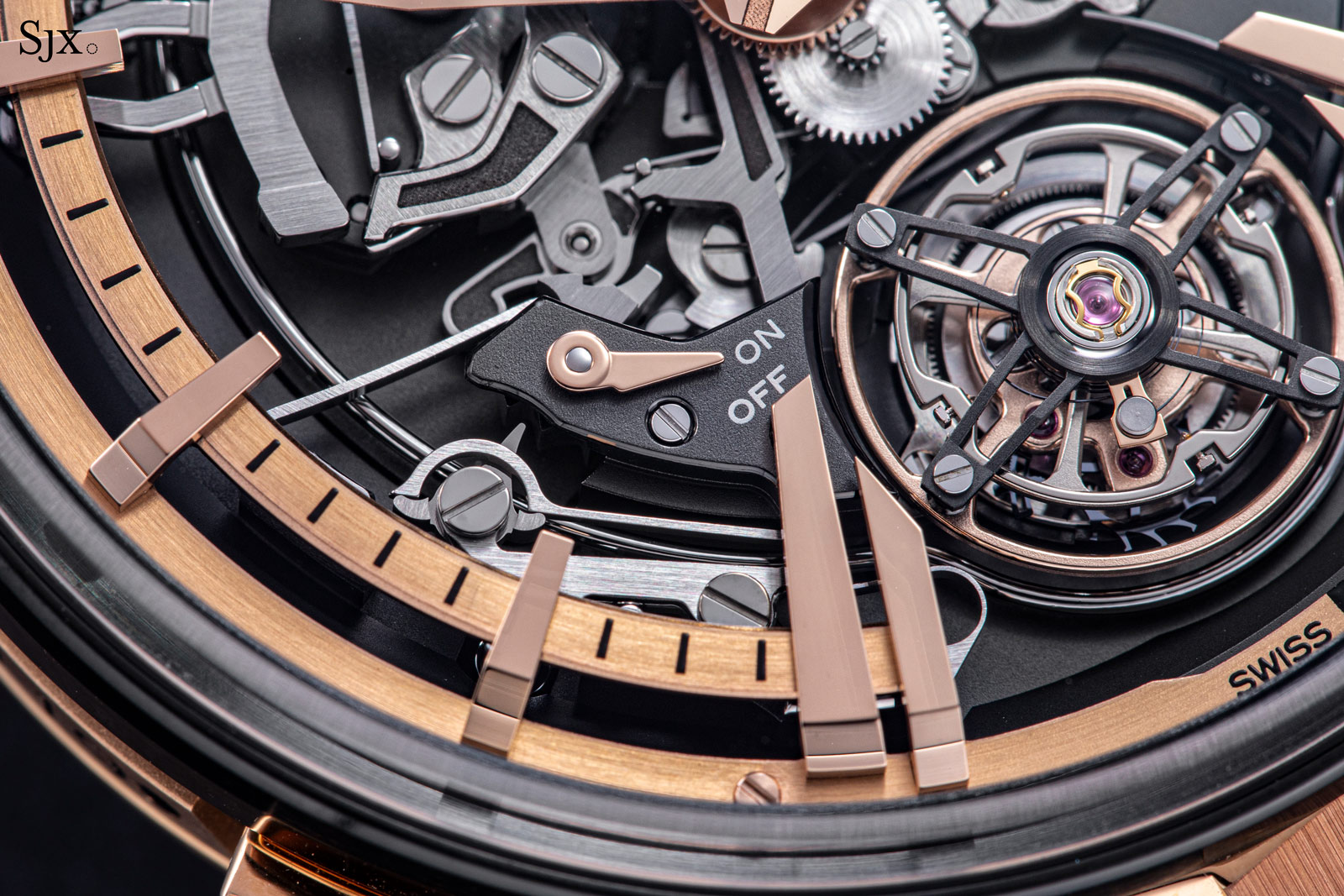
The indicator beside the tourbillon shows the status of the chiming mechanism
Because the Hourstrike strikes the current hours at the top of each hour, it shares several key components with a minute repeater (that strikes the hours, quarters, minutes), namely the rack and snail that “read” the hours and dictate the number of strikes. With this information, the hammer located at 12 o’clock strikes the gong that encircles the dial – with the gong including a small diversion to accommodate the tourbillon at six.
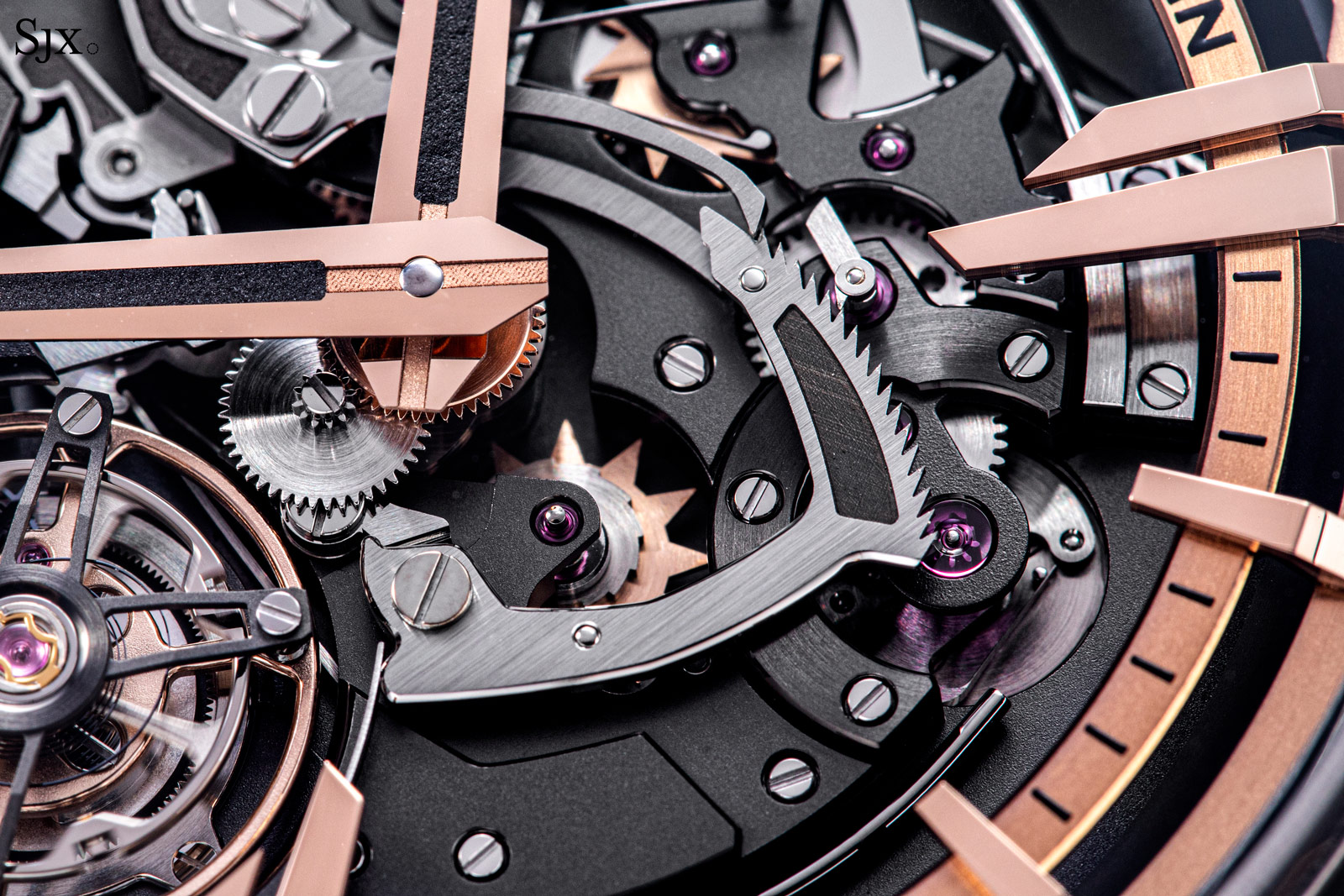
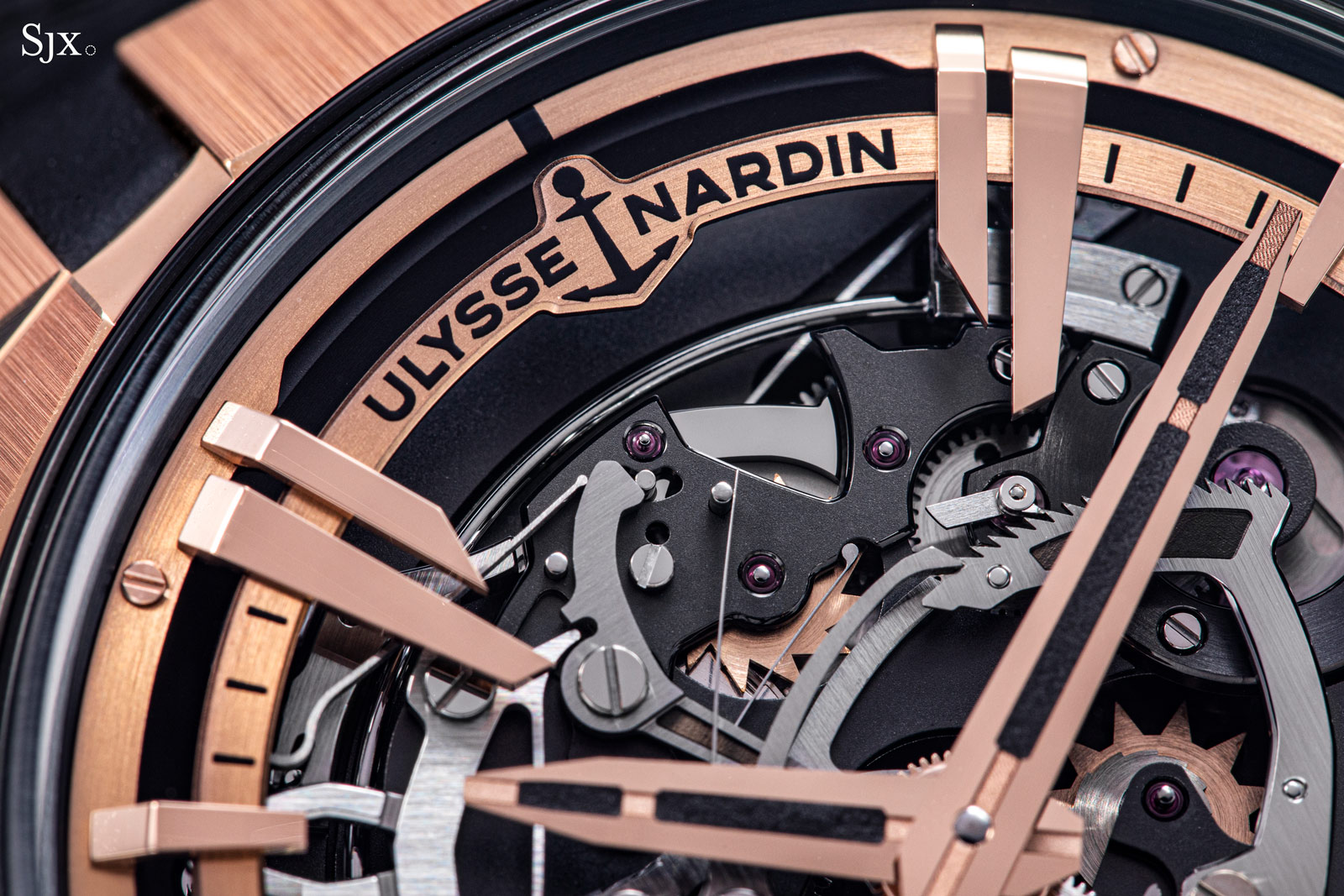
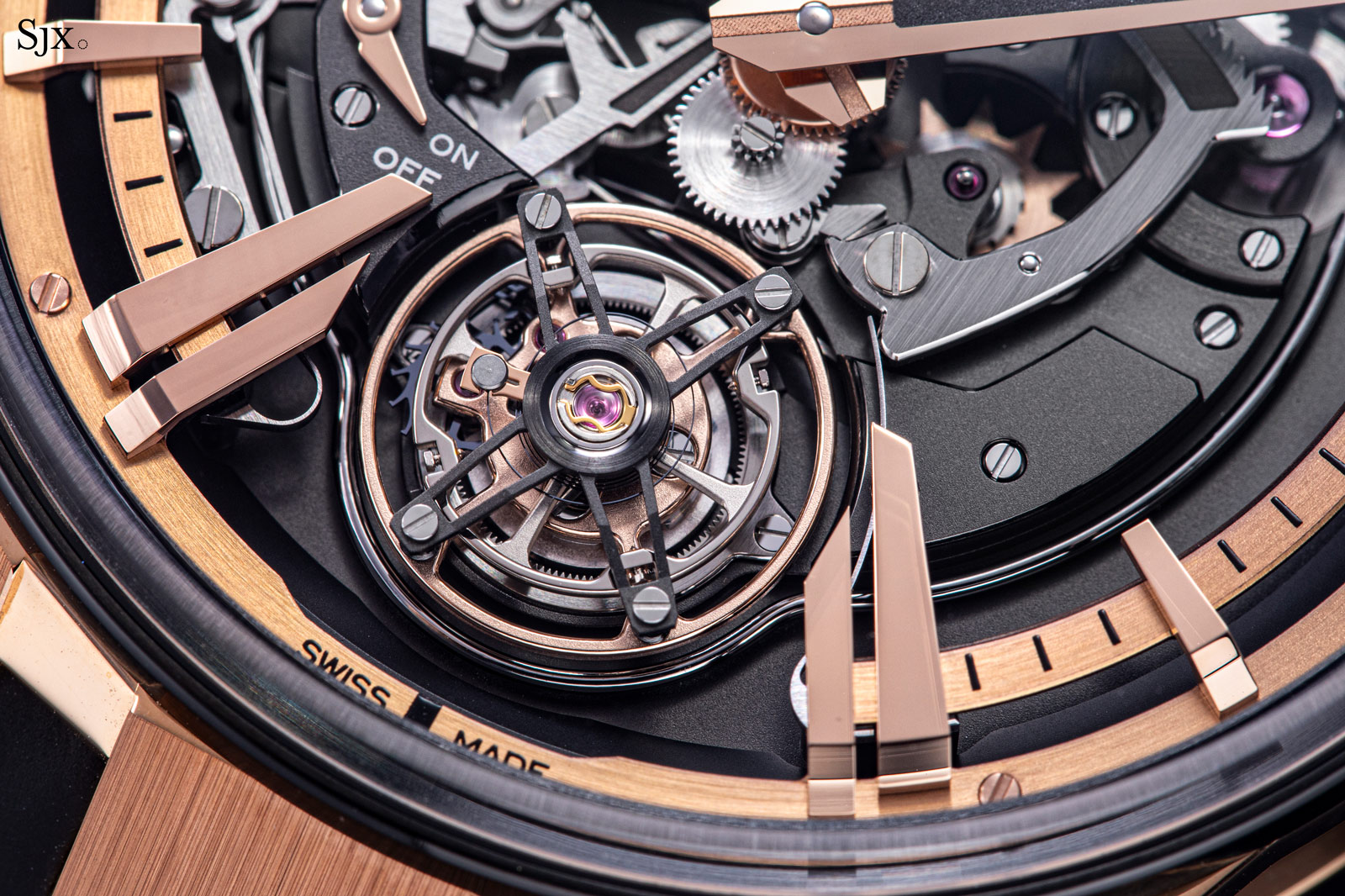
The gong forms a wide “U” at six o’clock to loop around the tourbillon
But the secret sauce of the Hourstriker is the Devialet amplification system. It’s a two-part invention with the more obvious component being the soundboard that is visible on the back.
The back is actually double layered: an outer 18k rose gold back with perforations forming an “X” that allow sound to be transmitted out of the case.
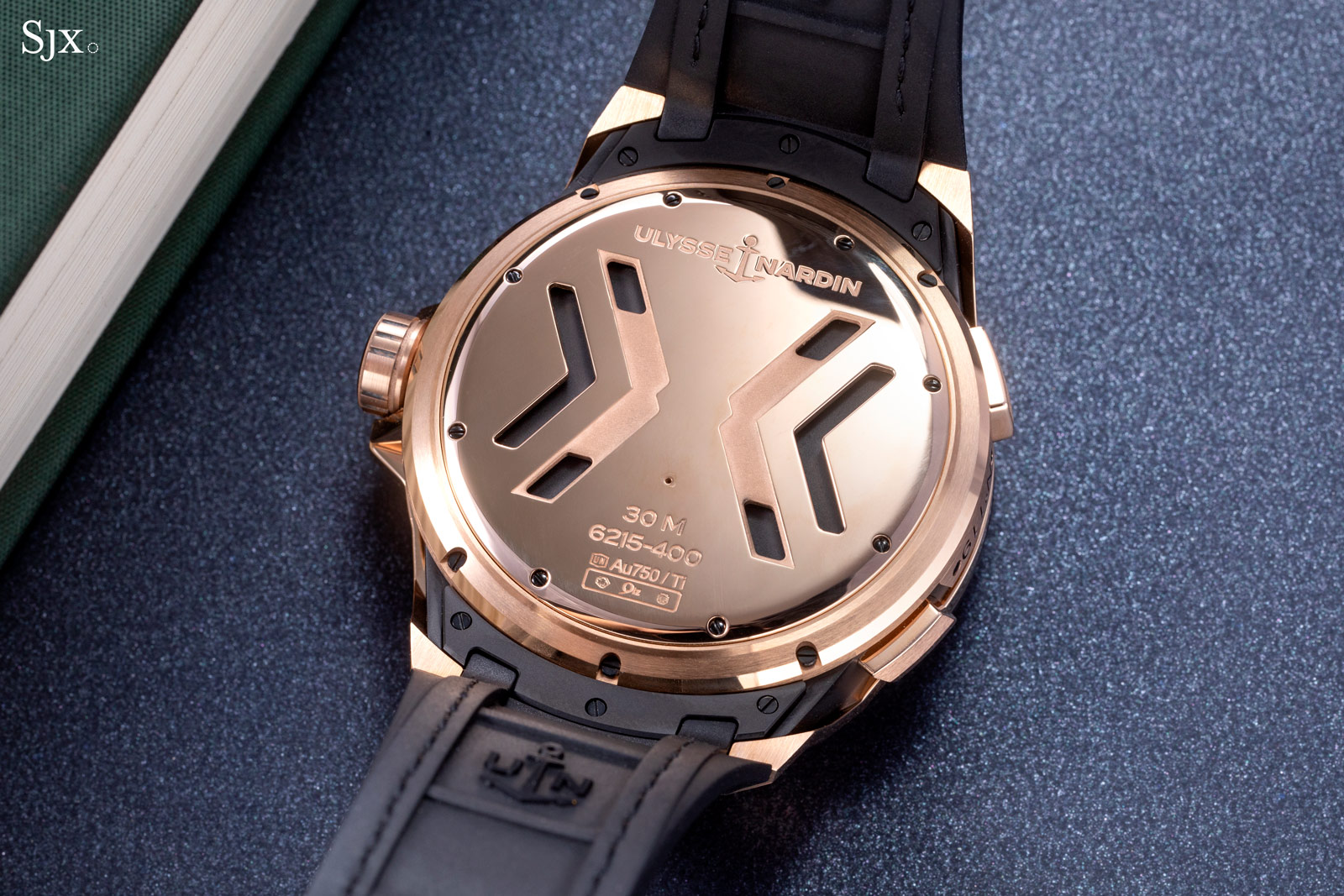
Under this gold back is a DLC-coated titanium membrane that is exceptionally thin that functions as the soundboard. Because the membrane is so thin – just 0.3 mm or about the width of a human hair – it “offers a large deformation area… [that] moves a large volume of air” according to UN. In other words, it vibrates easily and substantially, creating sound waves in the air that travel out of the case through the perforations on the outer back.
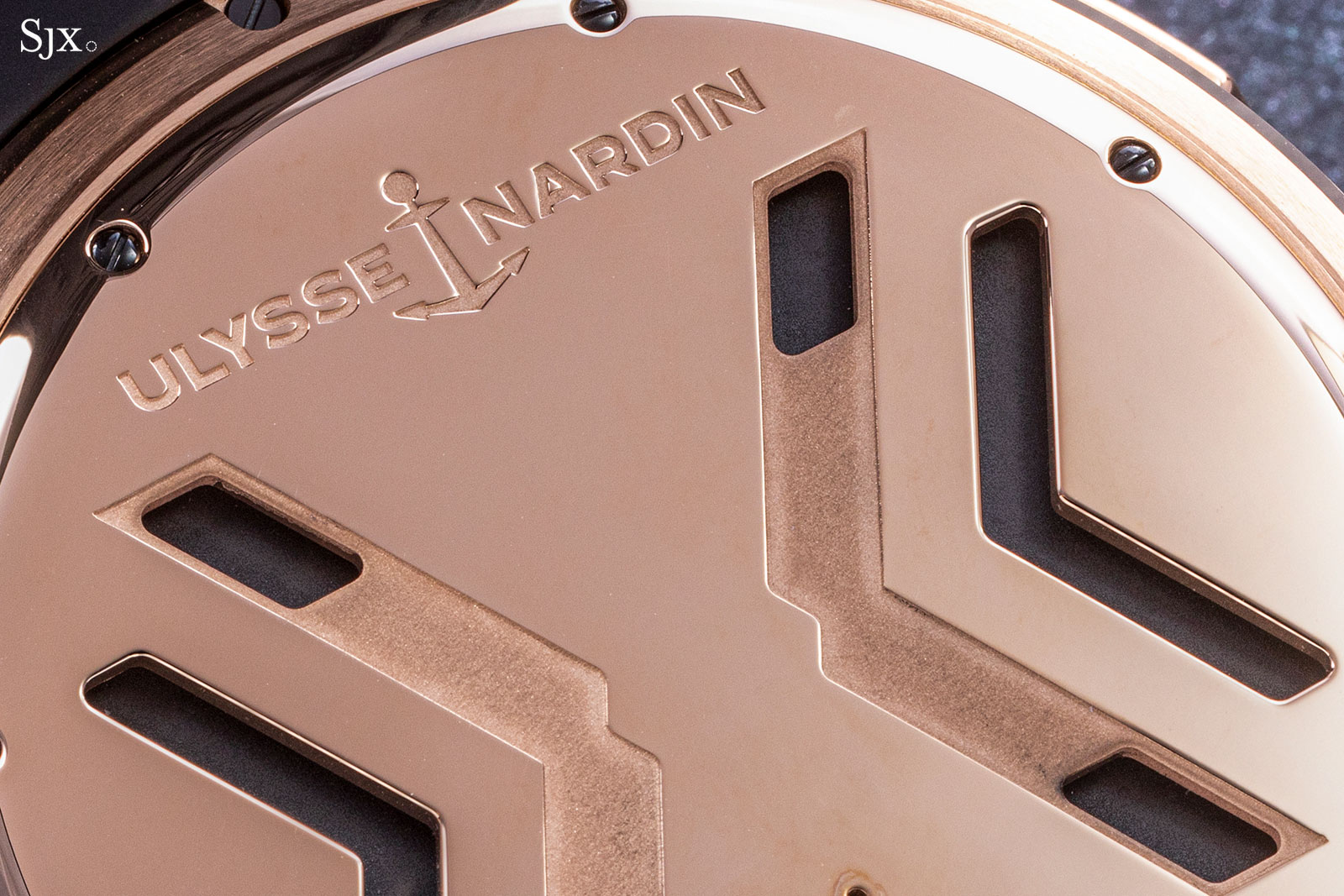
The inner titanium back is coated in diamond-like carbon, explaining its black finish visible through the perforations
The double back is a familiar idea in innovation striking watches, both Audemars Piguet and Patek Philippe have their version of the same idea. But it is the second key part of the Devialet system that sets it apart.
Known as the “torsion lever”, it’s a component with an in-built spring that connects the base of the gong to the membrane on the back. Because the torsion lever is sprung, it creates constant tension between the gong, itself, and the membrane, improving the transmission of sound.
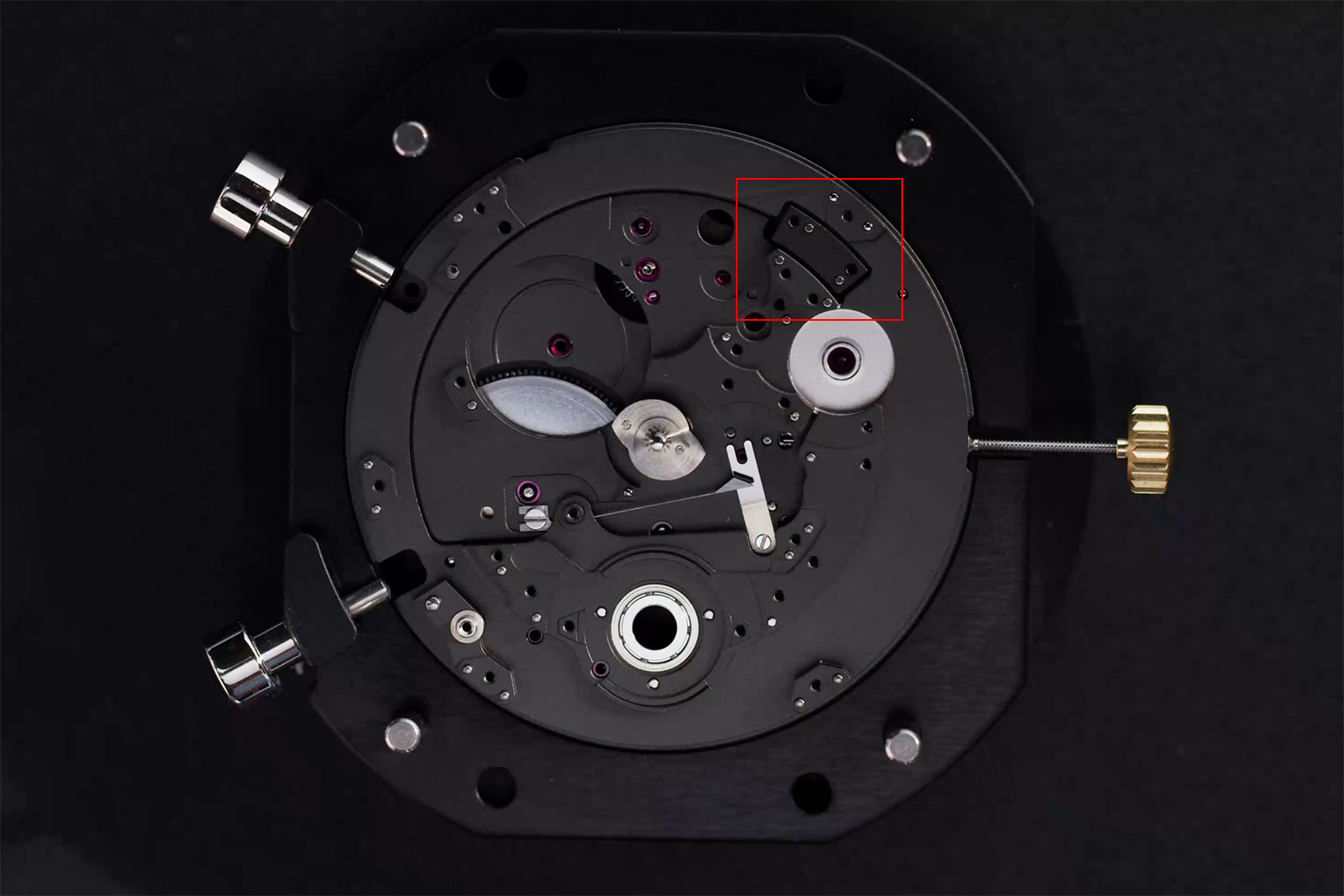
The empty baseplate with the base for the gong at top right; from there it connects to the membrane on the back. Image – Ulysse Nardin
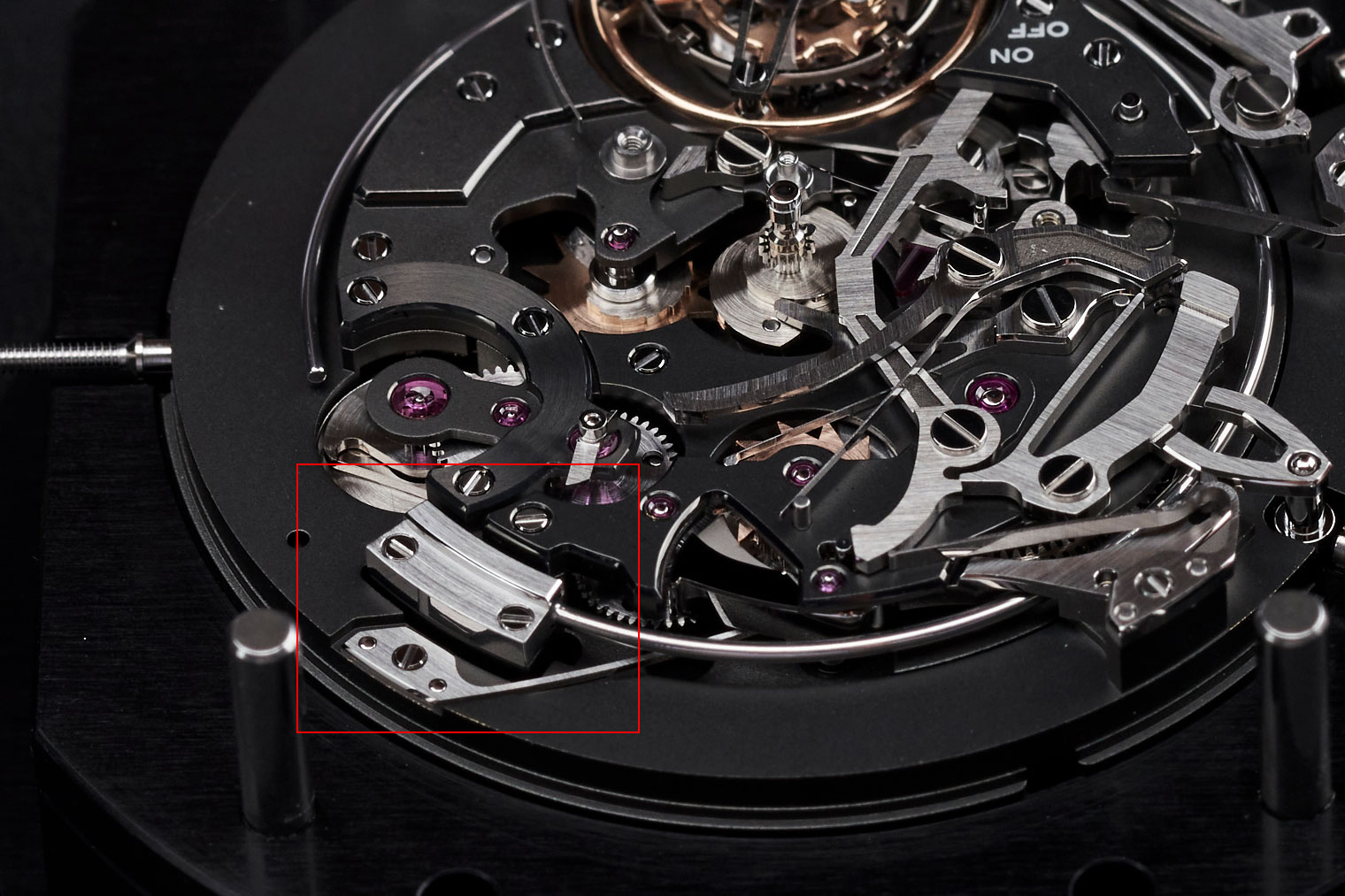
The gong affixed to the torsion lever that is in turn connected to the membrane. Image – Ulysse Nardin
A self-winding tourbillon
The Blast Hourstriker is powered by the UN-621, an automatic base movement with the chiming mechanism on the dial. The base is derived from the UN-128, an automatic calibre with a flying tourbillon.
Certainly a major improvement over the ETA 2892 in the Hourstriker Phantom, the UN-128 is part of a longstanding family of movements (with origins in a Lemania construction) that includes a range of calibres, including a tourbillon with power reserve and UN’s signature perpetual calendar.
The base movement is a workhorse with a 60-hour power reserve and runs at 4 Hz. Amongst its notable features is the simple and effective “Magic Lever” automatic winding mechanism that was devised by Seiko in 1959 but now widely used across Swiss watchmaking.
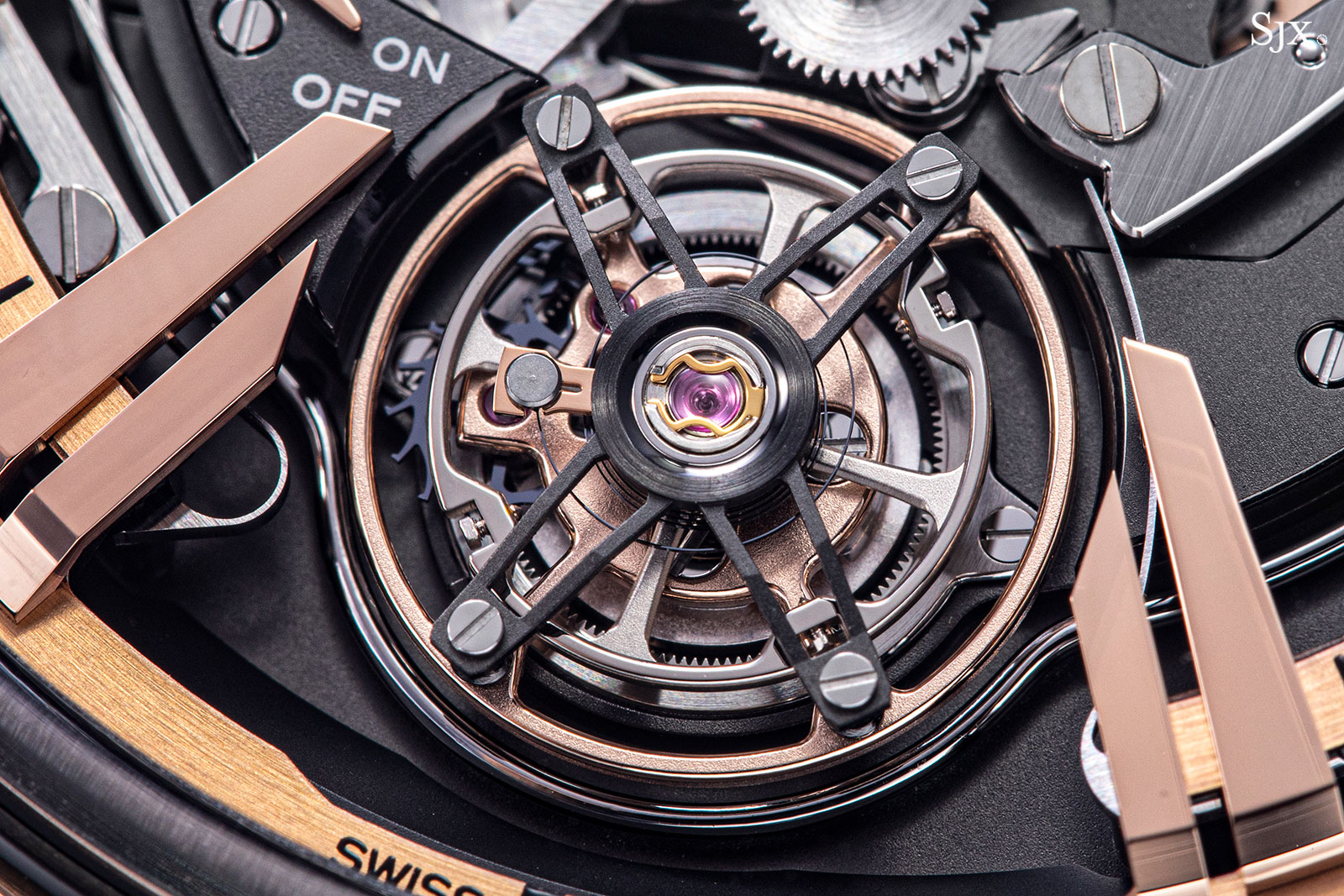
Even though the basic architecture of the movement is two decades old, the calibre has been steadily upgraded by UN, which now makes most of its movements in-house.
Amongst the upgrades are the hairspring, escape wheel, and pallet lever in silicon, a non-magnetic and easily assembled material that UN uses extensively across its calibres. The brand was a very first to use silicon in a serially-produced wristwatch with the Freak in 2001, explaining why it favours the material.
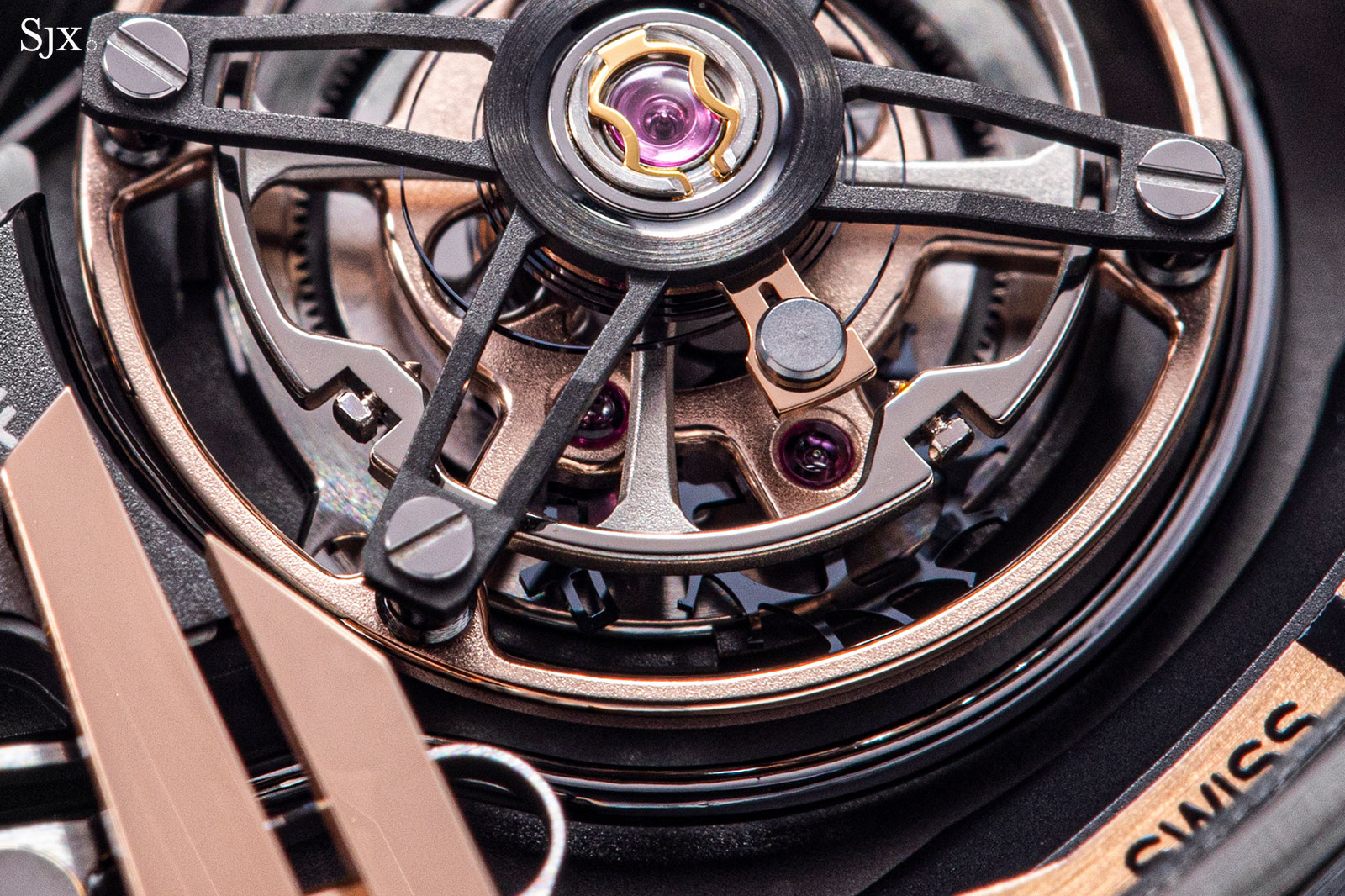
Although the movement is hidden by the double back, its execution is identical that of UN’s other offerings. The decoration is comprehensive and neat, but largely industrial in approach, putting it in the company of brands like H. Moser & Cie. or Jaeger-LeCoultre.
That verdict, however, only applies to the base movement. The striking mechanism visible on the front is finished to a higher level, probably because it is front and centre.
The chiming mechanism sits on a DLC-coated plate that is frosted but accented with polished, rounded bevels. The same finishing is applied to the other bridges visible on the front, including that for the sonnerie “on/off” indicator.
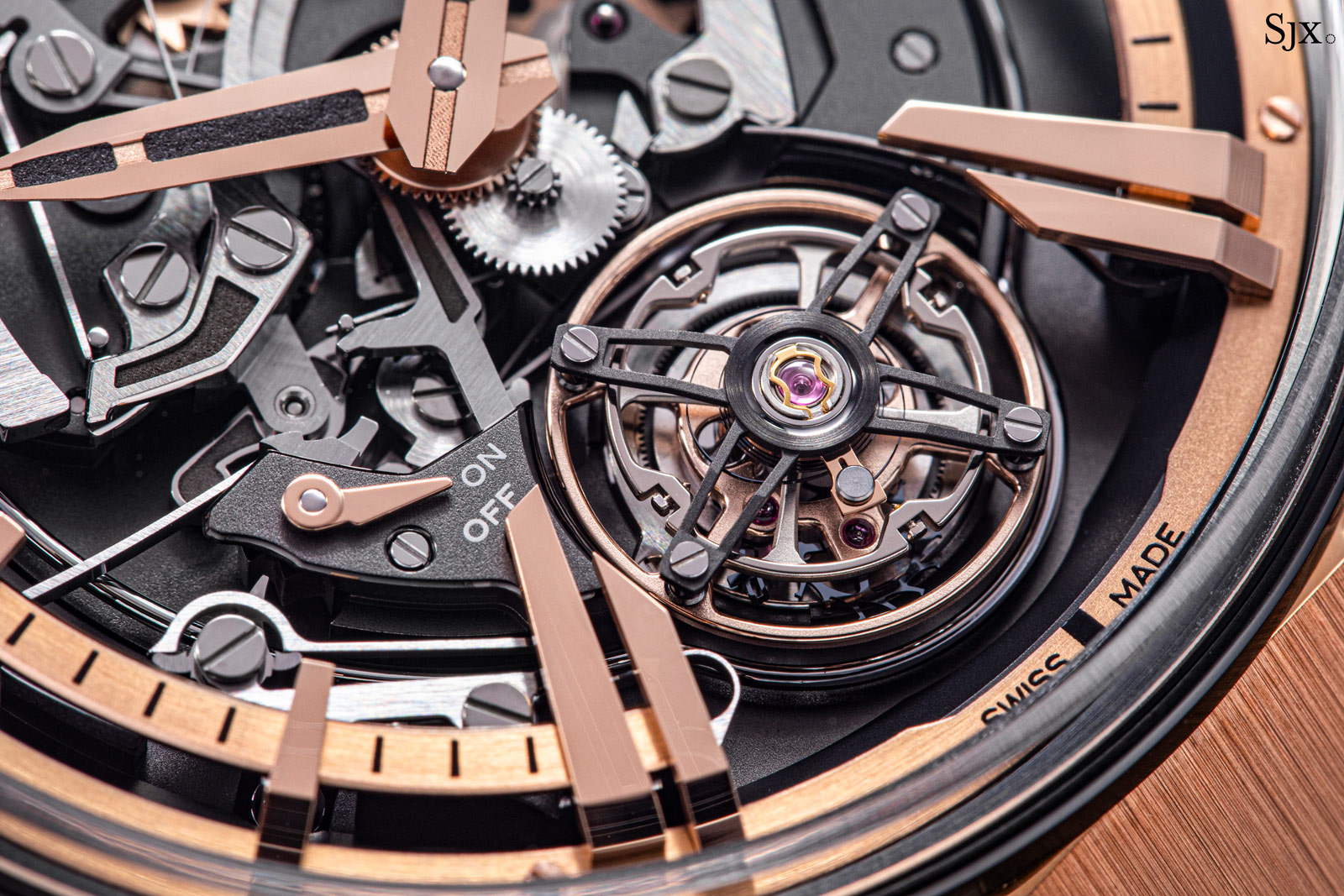
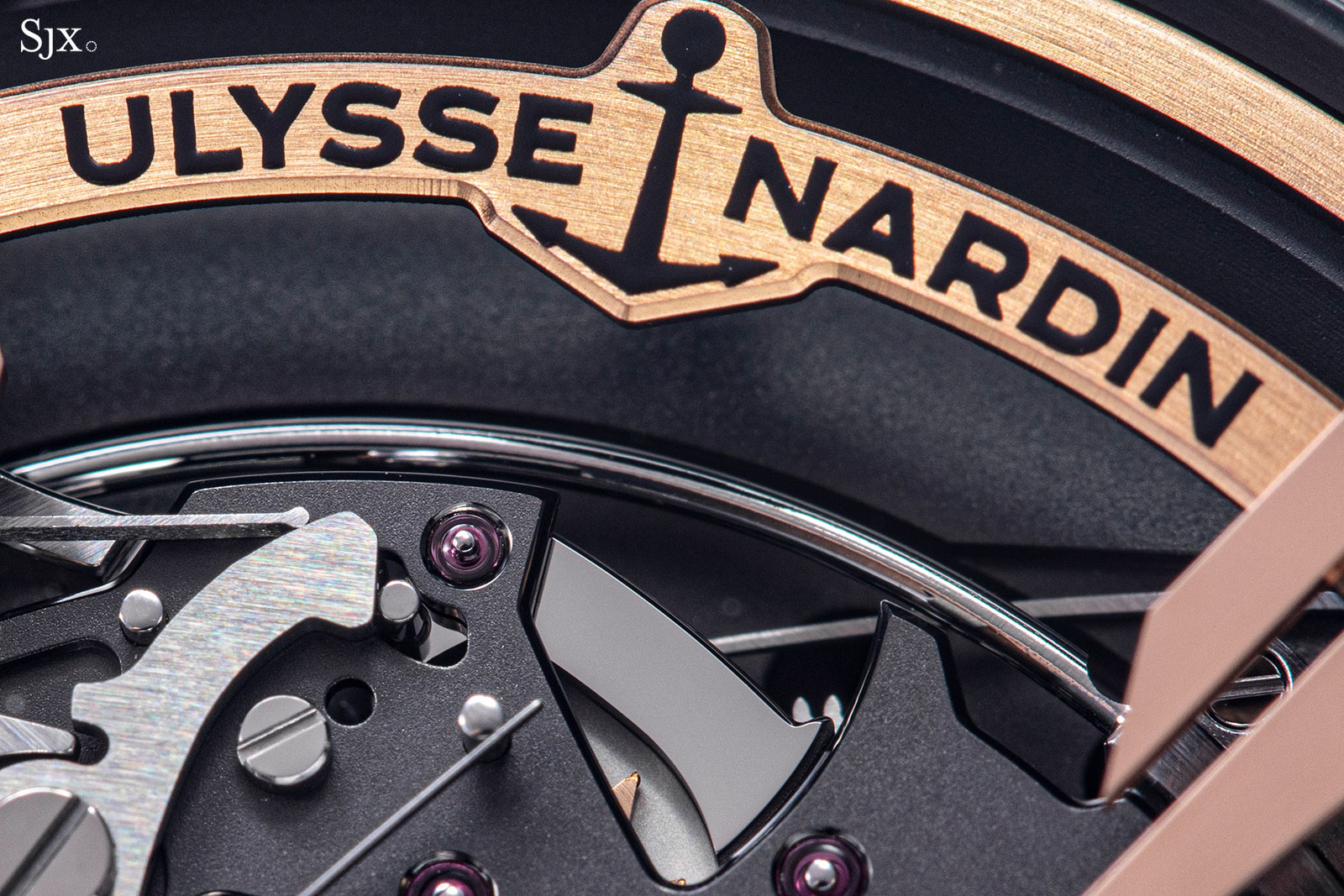
The steel parts of the strikework are more traditionally finished and well done – straight grained on top and anglage along the edges. All of the large screw heads exhibit chamfered edges and slots. However, a few of the steel parts have recessed centres that are coated black, a design element to match the overall aesthetic.
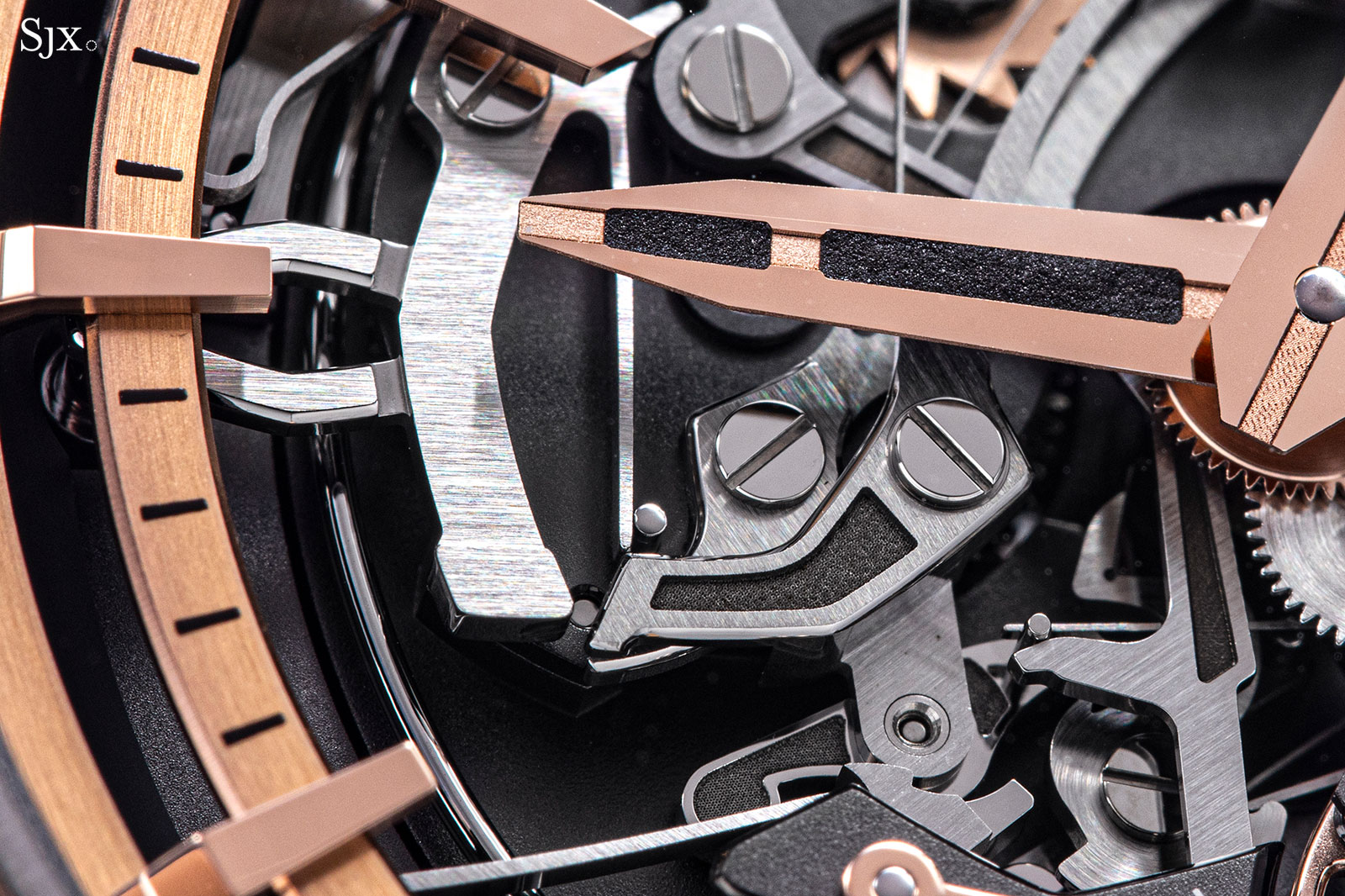
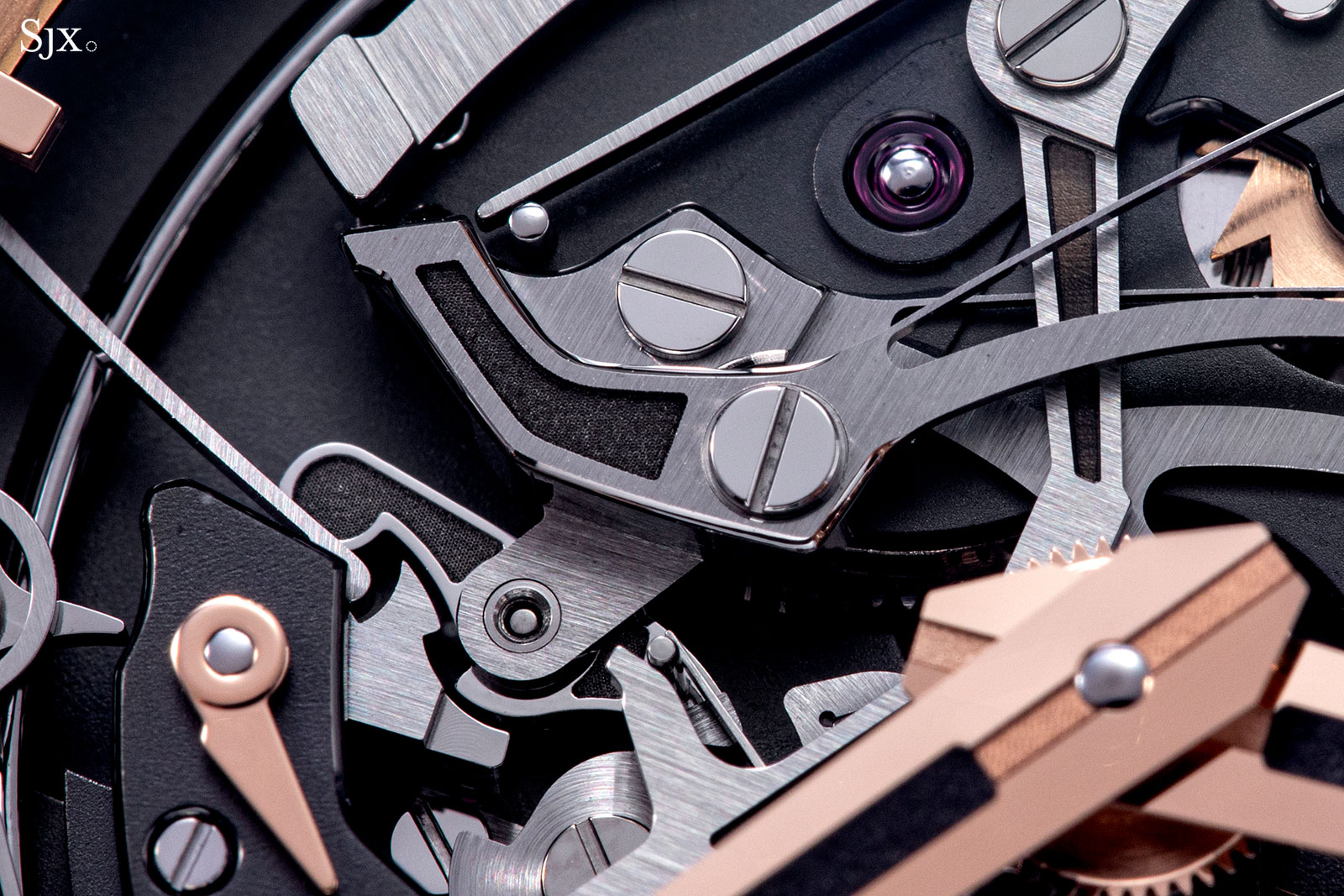
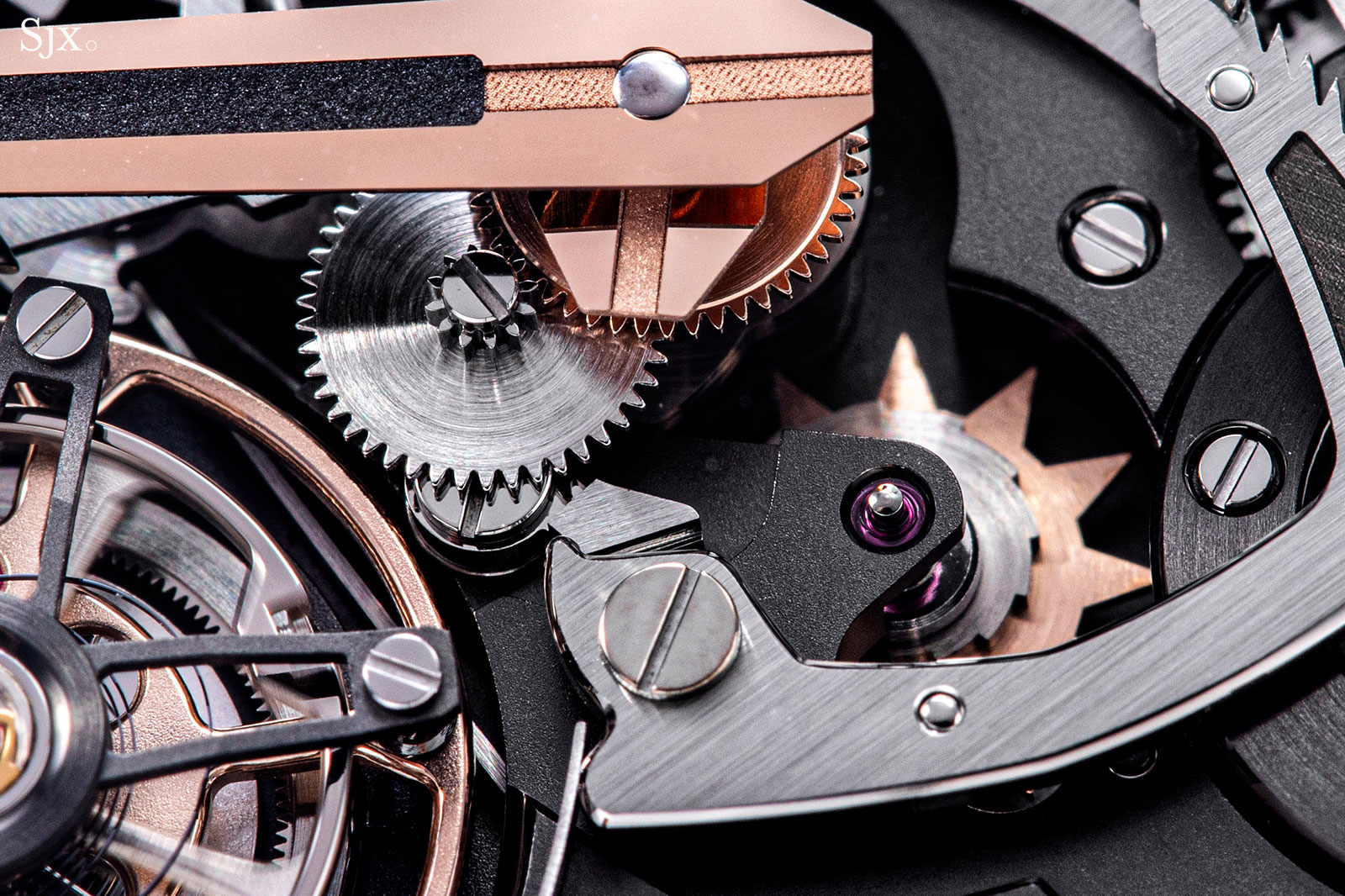
The Hourstriker is presented in a 45 mm case in the same style as the rest of the Blast line. Featuring an angular, polygonal upper that brings to mind early stealth aircraft, the case has a highly modern style that is currently a favourite of watch designers.
Having no bezel in order to accommodate a panoramic crystal, the case is essentially three parts: a rose gold upper plate with a polygonal shape, a DLC-coated titanium middle, and a rose gold case back.
The gold components are finished well, particularly the upper plate with its complex shape. The plate is made up of a variety of mirror polished and brushed surfaces, all sitting at different angles and uniformly well finished.
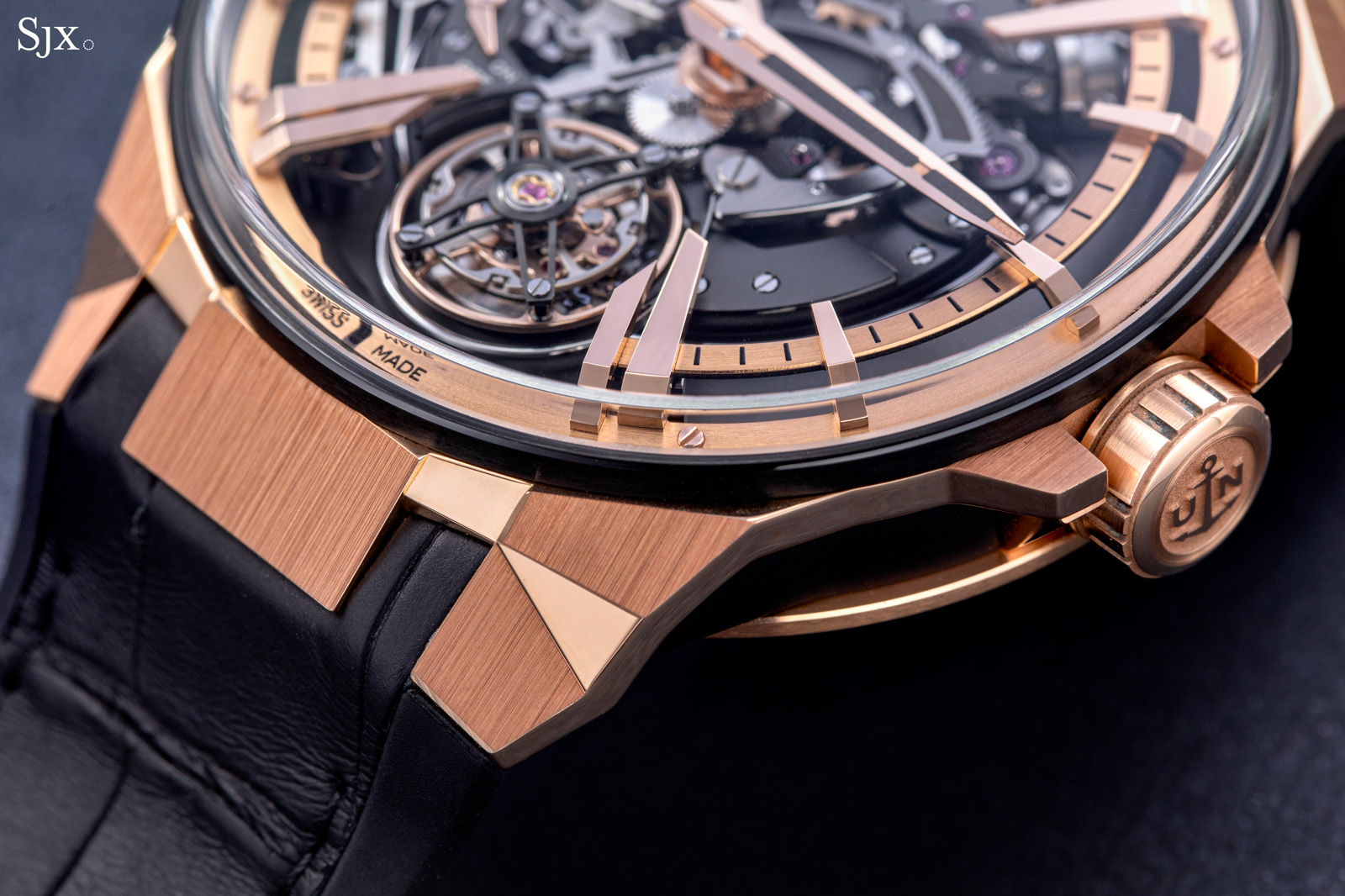
The crystal is a “box type” that rises up from the case to show off the strikework
The elaborate styling of the case takes attention away from the intricate strikework on the dial. I would have preferred a more traditional – and smaller – design, but still the case is executed well in terms of finishing and construction.
The size of the case will be a consideration for some, as it only sits well on wrists that are medium-sized or larger. This is especially so given the integrated strap that is attached rigidly to the case.
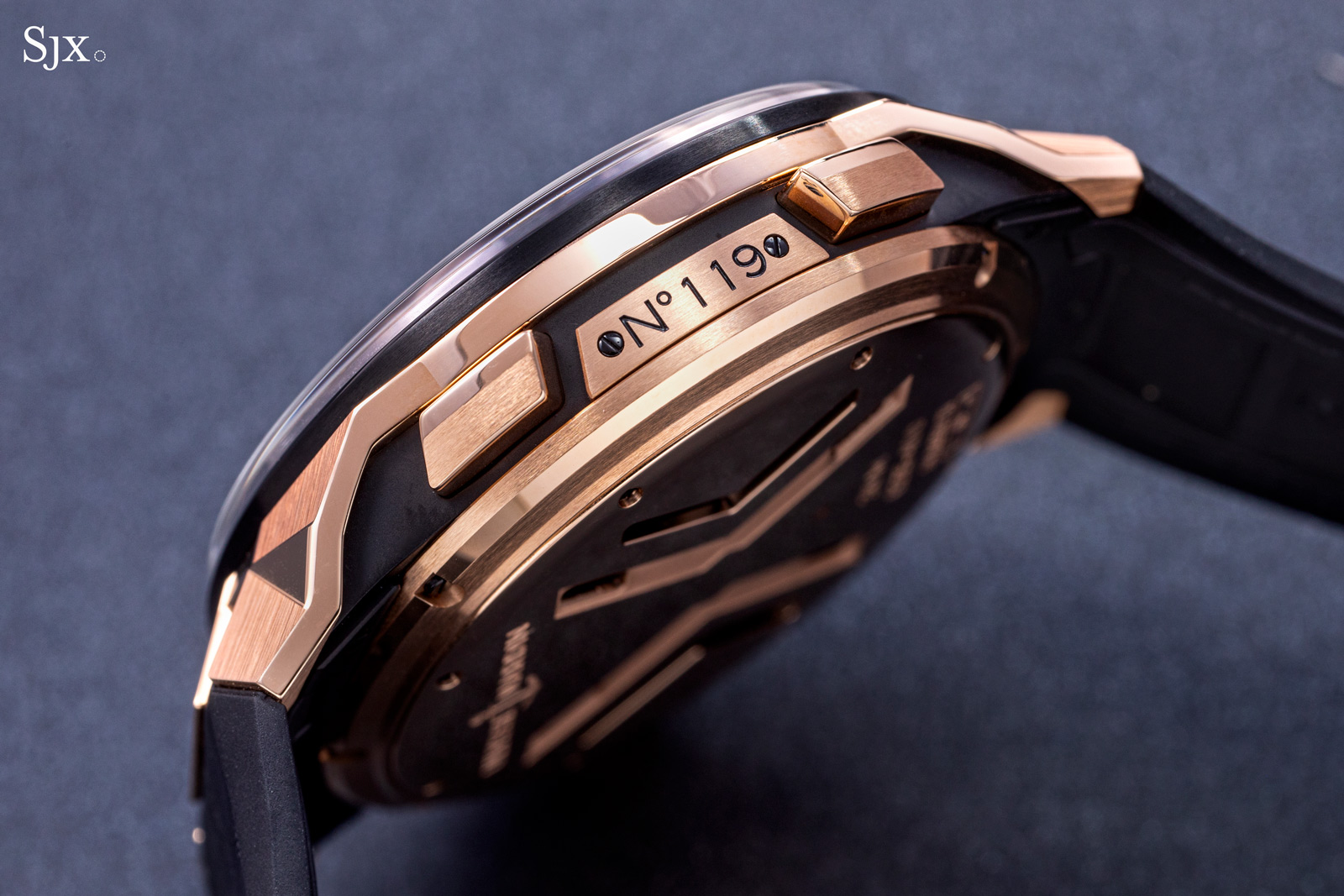
Concluding thoughts
The Blast Hourstriker is an interesting and well-executed watch from a brand that doesn’t get quite as much recognition as it deserves. The Devialet system is of particular note, and reflects the high level of innovation that characterises UN, a quality that is also seen the in silicon components of the movement.
That said, the watch has polarising aesthetics, stemming from both its large size and hyper-modern styling. A classical version of this watch would certainly gain a wider audience, if for nothing else than wearability.
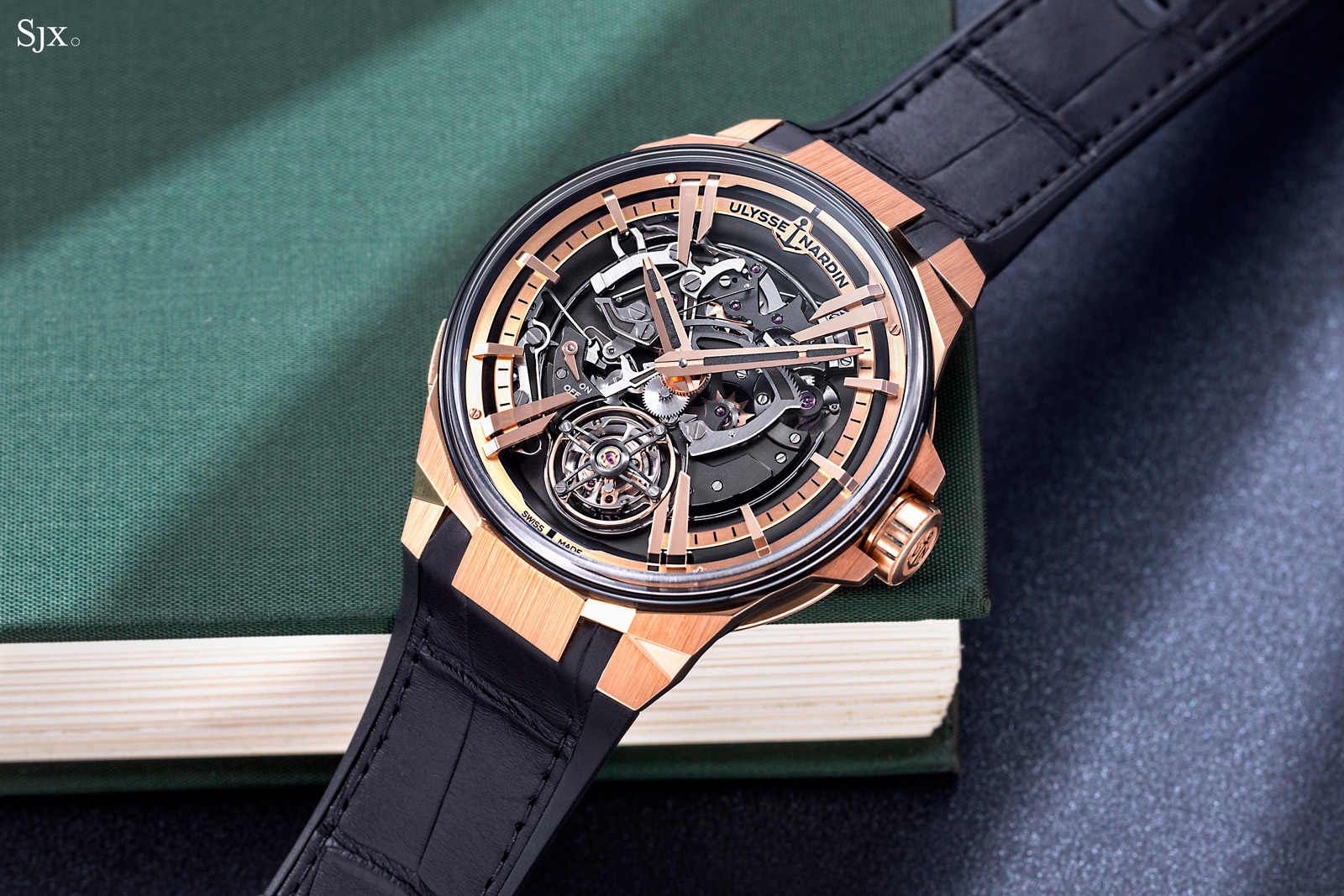
Key facts and price
Ulysse Nardin Blast Hourstriker
Ref. 6215-400/02
Diameter: 45 mm
Height: Unavailable
Material: DLC-coated titanium and 18k rose gold
Crystal: Sapphire
Water resistance: 30 m
Movement: UN-621
Functions: Hours, minutes, tourbillon, and hourstriker
Winding: Automatic
Frequency: 28,800 beats per hour (4 Hz)
Power reserve: 60 hours
Strap: Alligator strap with folding buckle
Limited edition: No
Availability: At Ulysse Nardin boutiques and retailers
Price: US$121,300; or 170,700 Singapore dollars
For more, visit Thehourglass.com.
This was brought to you in partnership with The Hour Glass, the retailer for Ulysse Nardin in Southeast Asia and Australia.
Back to top.

